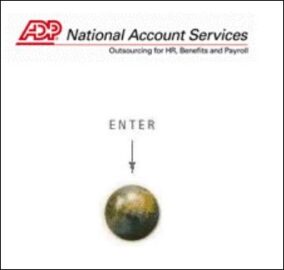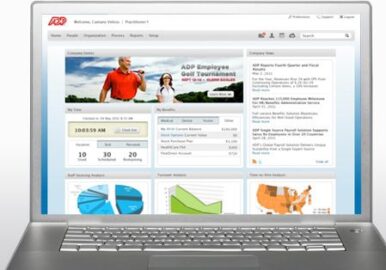Operating margin is calculated with the same formula as gross margin, simply subtracting the additional costs from revenue before dividing by the revenue figure. Operating expenses include items such as wages, marketing costs, facility costs, vehicle costs, depreciation, and amortization of equipment. Analyzing a company’s historical operating margins can be a good way to tell if recent earnings growth in the business is likely to last. The gross margin varies by industry, however, service-based industries tend to have higher gross margins and gross profit margins as they don’t have large amounts of COGS.
No, they are not always equal as gross profit is an absolute value in dollars while gross margin is expressed as a percentage. Gross profit is the total sales minus the cost of generating that revenue. In simple terms, it is your total profit minus other expenses such as salaries, rent, and utilities.
Aspen Aerogels, Inc. Reports Second Quarter 2023 Financial … – PR Newswire
Aspen Aerogels, Inc. Reports Second Quarter 2023 Financial ….
Posted: Wed, 02 Aug 2023 20:30:00 GMT [source]
So if your new business brought in $300,000 last year and had expenses of $250,000, your net profit margin is 16%. Others will use the term gross margin to mean the gross profit margin or gross profit percentage or gross margin ratio. For gross margin, the higher the percentage, the more financial value-add is produced on each dollar of sales made by the company.
Operating Profit Margin
Those with lower margins often have higher overhead and more expenses to pay. Consider business owners in the foodservice industry, which have to consider inventory, rent, utilities, and labor. If an item costs $100 to produce and is sold for a price of $200, the price includes a 100% markup which represents a 50% gross margin.

Gross margin is something that all investors should consider when evaluating a company before buying any stock. When calculating net margin and related margins, businesses subtract their COGS, as well as ancillary expenses. Some of these expenses include product distribution, sales representative wages, miscellaneous operating expenses, and taxes. Gross margin focuses solely on the relationship between revenue and COGS. Net margin or net profit margin, on the other hand, is a little different. Put simply, it’s the percentage of net income earned of revenues received.
Gross Margin Formula and Calculation
SmartAsset does not review the ongoing performance of any RIA/IAR, participate in the management of any user’s account by an RIA/IAR or provide advice regarding specific investments. Larger sales figures are great, but make sure you’re earning maximum money on those sales. If your business is new, there are several factors to consider before developing a sense of your ideal profit margin. We look at some of the basics of what you should consider when you’re measuring profitability and studying your profit margings. Note that generally accepted accounting principles (GAAP) require that gross profit be broken out and clearly labeled on all profit and loss (P&L) statements.

Whereas you can calculate gross profit using only your total sales and COGS, gross margin requires you to know your gross profit first, which you then divide by your total sales revenue. Companies strive for high gross profit margins as they indicate greater degrees of profitability. When a company has a higher profit margin, it means that it operates efficiently. It can keep itself at this level as long as its operating expenses remain in check.
Net profit margin is the profit that remains after subtracting both the COGS and operating expenses from revenue. A company’s operating profit margin or operating profit indicates how much profit it generates under its core operations by accounting for all operating expenses. This type of profit margin takes additional expenses into account, such as interest and expenses. Another report by Deloitte found that gross margin is particularly important for retailers. The report found that retailers with a gross margin of 40% or higher tend to have better financial performance than those with lower gross margins.
For example, if a company’s gross margin is falling, it may strive to slash labor costs or source cheaper suppliers of materials. Gross profit margin indicates a company’s sales performance based on the efficiency of its production process or service delivery. It’s calculated by subtracting direct costs from revenue, dividing that figure by revenue and then multiplying by 100. Net profit margin gives a more comprehensive picture of a company’s overall profitability as it also includes operating expenses, whereas gross profit margin does not. It is wise to compare the margins of companies within the same industry and over multiple periods to get a sense of any trends. Gross profit margin is a measure of profitability that shows the percentage of revenue that exceeds the cost of goods sold (COGS).
What is profit margin?
Companies use gross profit margin to determine how efficiently they generate gross profit from sales of products or services. For many businesses, it is expected to have a net profit margin that is lower than your gross profit margin. Every successful business keeps its costs below revenue to generate profits.

On the other hand, if a company’s gross margin is falling, it may look to find ways to cut labor costs, lower costs on acquiring materials or even increase prices. Higher gross margins for a manufacturer indicate greater efficiency in turning raw materials into income. For a retailer it would be the difference between its markup and the wholesale price. Instead of accounting for just the direct cost of creating and selling a product like gross profit margin, net profit margin accounts for all expenses. This value can also help calculate the profit margin of a specific product or offering, instead of finding the margin for the company as a whole. To calculate the gross profit margin of a specific product, use the revenue earned from sales of the product, and the costs related to the production of the product.
What Is a “Good” Gross Profit Margin? Should It Be High or Low?
It’s based on net profit, or how much a company makes after accounting for operating expenses (cost of goods sold, general and administrative expenses, loan interest and taxes). Gross profit is a measure of absolute value, while gross margin is a ratio. Gross profit is simply the difference between a company’s sales and its direct selling costs, and a company’s gross margin is its gross profit expressed as a percentage of sales. Gross margin puts gross profit into context by taking the company’s sales volume into account. Gross profit margin (gross margin) and net profit margin (net margin) are used to determine how well a company’s management is generating profits. It’s important for investors to compare the profit margins over several periods and against companies within the same industry.
- Besides driving more profit to the bottom line (net income), a high gross profit margin leaves more money to invest in R&D and other activities that support long-term growth.
- In a more complex example, if an item costs $204 to produce and is sold for a price of $340, the price includes a 67% markup ($136) which represents a 40% gross margin.
- In other words, the company is becoming more efficient and generating more profits for the same amount of labor and material cost.
- Also referred to as net margin, it indicates the amount of profit generated as a percentage of a company’s revenue.
- Gross profit is an absolute dollar amount, while gross margin is a percentage.
The gross profit margin reflects how successful a company’s executive management team is in generating revenue, considering the costs involved in producing its products and services. In short, the higher the number, the more efficient management is in generating profit for every dollar of the cost involved. A high gross profit and margin are considered positive indicators of a company’s financial health. However, it would help if you considered other factors impacting a company’s profitability, such as operating expenses, taxes, and interest payments.
Is gross profit always equal to gross margin?
Let’s assume that the cost of goods consists of the $100,000 it spends on manufacturing supplies. Therefore, after subtracting its COGS from sales, the gross margin is $100,000. A negative net profit margin occurs when a company has a loss for the quarter or year. Reasons for losses could be increases in the cost of labor and raw materials, recessionary periods, and the introduction of disruptive technological tools that could affect the company’s bottom line. It is important to note the difference between gross profit margin and gross profit.
- Understanding both is important for getting a well-rounded view of the financial performance of your company, and are useful data points for determining both short and long-term financial strategies.
- You can find gross profit calculated on financial statements for a business or company, including profit-and-loss statements.
- Taking on debt, for example, or restructuring pricing can both impact the bottom line, which may not be evident just by looking at gross profit or gross margin.
- In our coffee shop example above, the gross profit was $80,000 from revenue of $200,000.
Net profit is calculated by subtracting gross profit from operating expenses, taxes, and interest payments. Gross margin, on the other hand, measures the profitability of a company’s core operations as a percentage of its total revenue. It provides insight into how much profit a company can generate from each sales dollar. Gross profit and gross margin both look at the profitability of a business of any size. The difference between them is that gross profit compares profit to sales in terms of a dollar amount, while gross margin, stated as a percentage, compares cost with sales. For manufacturers, the cost of sales—or cost of goods sold (COGS)—includes costs such as raw materials and hourly wages of workers directly involved in manufacturing products.
It is important to note that there is no single profit margin number that separates a good profit margin from a bad profit margin. In fact, how good your company’s profit margin is will largely depend on the standards in your industry. That’s good news if you run a business because you want to keep cash flowing efficiently so you can scale your company up. As an investor, you may be drawn to companies with a higher gross margin since that could suggest greater earning potential over the long-term.
Gross margin is just the percentage of the selling price that is profit. You can use your current gross margin and profit margin as starting points to set your financial goals and then analyze your income statement to figure out how to get there. With your w2 box descriptions experience and imagination, you can choose the one that best fits your profit objectives. Determining a company’s gross margins for multiple reporting periods provides insight into whether the company’s operations are becoming more or less efficient.
Shopify Announces Second-Quarter 2023 Financial Results – Shopify
Shopify Announces Second-Quarter 2023 Financial Results.
Posted: Wed, 02 Aug 2023 20:53:05 GMT [source]
And companies can use these calculations to pinpoint areas where they may need to reduce expenses or increase production efficiency to become more profitable. Gross profit is a measure of the profitability of a company’s core operations, excluding other expenses such as operating expenses, taxes, and interest payments. It provides insight into how much money a company has left over after paying for the direct expenses of producing or acquiring its products or services. While gross profit and gross margin are measures of a company’s profitability, they reveal different information about its financial health.